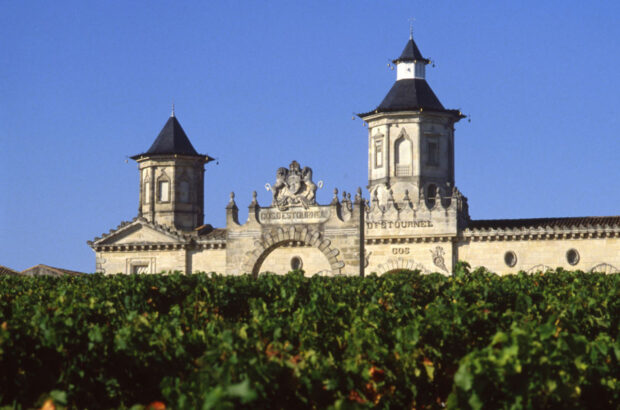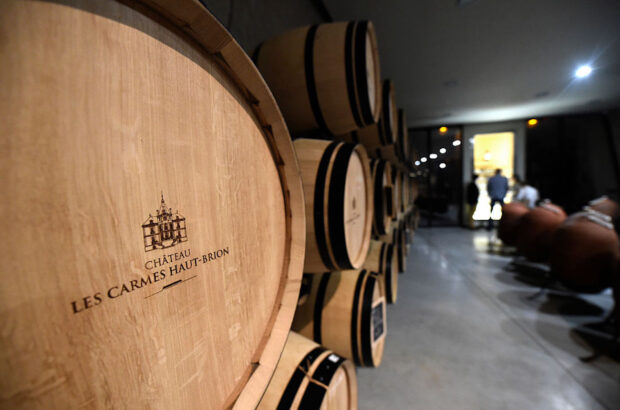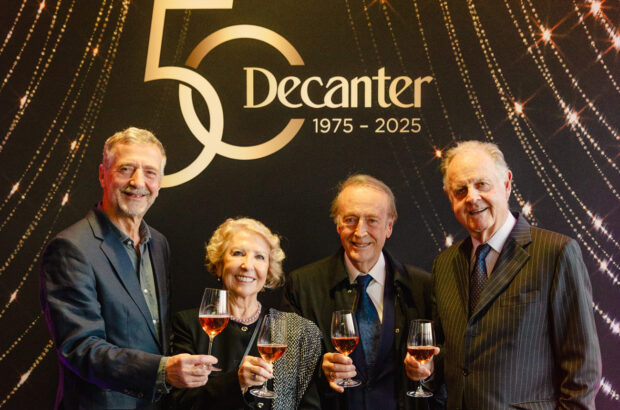There’s a reason why heavily-applied perfume ranks highly on most wine lovers’ list of pet peeves. It overpowers your senses, conceals aromas and distorts your perception of a wine. In professional tastings and wine exams the wearing of perfume is banned, if not thoroughly frowned upon. You just don’t do it.
What then, if we applied the same logic to music, controlling the sounds we hear, or don’t hear, while tasting wine? There’s no doubt that a chaotic environment can clog your synapses, making it harder to concentrate on the nuances of a wine. But can music enhance your experience of a wine, irrefutably altering your perception of it?
One Master of Wine (MW) has proven that it absolutely can. In the same way that the scent of baking bread can make a home more inviting, classical music can lift the experience of a Champagne when compared to silence, whether you’re a fan of the genre or not.
Susan Lin became an MW in 2021 and is currently head of wine expertise for fine wine retailer Belmont Wine Exchange in San Francisco. She also has a Masters in Fine Art, classical piano and musicology, and a previous career in high-tech data analysis at Google behind her. She set out with one aim; to find out if classical music could influence an individual’s perception of the same Brut NV Champagne. The official name for this field of study is crossmodal perception – why people make intuitive connections between unrelated stimulus, in this case taste and aural.
Lin chose five pieces of music* for their contrasting tempo, pitch, timbre and articulation, the fifth being silence. A cross section of participants, which included social drinkers, MW students, sommeliers and industry professionals were given the same five glasses of Veuve Clicquot Brut NV Yellow Label blind and played each piece at random. They were asked to rank each glass for its complexity, fruitiness, effervescence and freshness, but also how much they liked the wine and music, allowing Lin to quantify how each musical parameter impacted sensory perception.
The results were astonishingly clear.
Compared with silence, music universally enhanced the experience with participants perceiving the same wine to be more effervescent, more fruity and more complex. Notably, when ‘exciting’ music with a higher pitch and faster tempo was played, the same wine was perceived as being even more fresh and effervescent. ‘When tasted in silence the Champagne was perceived as least well liked, least effervescent, least fruity, least rich and least complex,’ says Lin. ‘It was deemed the most out of balance of the five. In other words the wine was worse without music, and this was statistically significant across the board.’
Of Lin’s 71 participants, 70 believed they were tasting five different wines. Even the sole participant who recognised that he was tasting the same wine felt his perceptions were unavoidably altered with each piece. And there was also almost no correlation between a participant’s enjoyment of the music and wine. In fact, some of Lin’s participants shared their dislike of classical music, but still found their perceptions positively altered.
Lin’s theory, which she would like to test more rigorously, is that different musical parameters (tempo, pitch, timbre, articulation) can be pulled from any genre, regardless of personal taste, to elicit similar results. ‘I’m not a fan of American country music, but when I listened to pieces of music I didn’t know I found it elicited experiences similar to classical music, and I could pull out those musical parameters.’
In short, one man’s Beethoven could be another’s Metallica, but they can both make a wine sing. Of her own experiences, Lin recalls drinking a Corbières. ‘It was a beautiful, simple wine. Later that evening I put on an Argentine composer of modern tango. All of a sudden it became more spicy, dense and layered.’
Why does it matter? Aside from improving wine satisfaction, there’s also ramifications for wine promotion. Sound signatures could be the next frontier in wine marketing, according to Lin. The idea of wine carrying a theme tune might sound silly, but it wouldn’t be the first industry to attach a musical identity to a brand. Think about Microsoft, Netflix, McDonalds. They all have instantly recognisable audio logos. Why not a wine brand?
‘Wine tasting is an experience, it creates memories, and I think music could be a really important element to brand presentation, because marketing and branding incorporates so much more than the visual,’ says Lin. ‘You could have a musical signature for your house, and perhaps each expression.’
While Lin isn’t the first to find a connection between environment and taste, she is the first to focus exclusively on sparkling wines. Charles Spence, professor of experimental psychology at Oxford University, is a leading name in the field of cross modal perception. His research has shown how light, music and colour can “digitally season” a wine, bringing out different characteristics. Wine writer Jo Burzynska has long taken a multi-sensory approach to wine tasting, pairing different genres with specific grape varieties to enhance different characteristics. In 2008 Professor Adrian North at the Heriot-Watt University found that a powerful piece of music caused a wine to be perceived as 60% richer and more robust than when no music was heard. Wines appeared bolder and fresher when accompanied by an upbeat pop track.
Lin’s study didn’t take into account dissonant or ‘sad’ pieces, but she’s curious what effect that might have. Would it be better, worse or the same as tasting in silence?
Sonic ageing
If you think all of this sounds far fetched, a bit wacky even, then you might consider the multitude of wineries that believe music can also alter a wine’s maturation in barrel, well before it’s seen the inside of a glass.

The barrel room at Montes
Sonic ageing is the use of music to age a wine or spirit. Argentina’s Kaiken, owned by Chilean winemaker Aurelio Montes, lulls its barrels 24/7 with Gregorian chants. Montes’ operation in Chile soothes its resting barrels with monastic melodies, while the fantastically artful Chateau La Grace Dieu des Prieurs in St-Emillon prefers Russian orchestral music.
Is there method in their madness? It makes sense that vibrations in a barrel increase the contact between wood and liquid, altering the ageing process.
It’s why New York’s Dark Island musically matures its spirits, believing that the vibrations encourage greater interaction between the liquid and barrel. They say the whiskies and rums of the 1700s (which historians tend to agree are among the best ever produced) have one thing in common – all were transported by wagon train or ship over several months, continually moving. Its own device, Tactile Immersed Isolated Maturation Engine (TIIME), creates liquid waves inside the barrel that force more barrel/liquid interaction. Heavier, faster music creates more vibrations and more interaction for a heavier spirit, compared with softer music which tends towards a lighter expression.
It’s logical. But while sonic ageing is based on the physical impact of music, Lin’s research focuses on the psychological effects. Music is powerful, and it makes sense that our sensory perception of a wine should be tied to our emotional state.
‘As much as science can try to isolate different elements of a sensory experience we are holistic sensory beings,’ adds Lin. ‘What we hear or don’t hear when we eat or drink has implications. Is this lettuce crunchy? Then it’s fresh. Research has shown that we take intuitive auditory cues to tell us about what we are eating and drinking.’
A good wine will speak for itself no matter the environment. But Lin’s research proves that no matter the expertise of the taster, music positively enhances your perception of a wine.
Still sceptical? Lin understands, but is resolute. ‘Music is such a phenomena that gives us so much pleasure, pain and everything in between. If music can make us feel so much, it might just make what the eat and drink more interesting. See what happens to that bottle of Two-Buck Chuck. It might just make it that little bit spicier, fruitier, or more interesting.’
The pieces used in Lin’s study:
- Johannes Brahms: Violin Concerto: Movement 3, Allegro giocoso, ma non troppo
- Claude Debussy: Danses Sacrée et Profane: Danse Profane
- Modest Mussorgsky: Pictures at an Exhibition: Promenade
- Camille Saint-Saëns: Carnival of the Animals: XIV – Finale
- Silence






